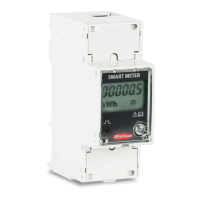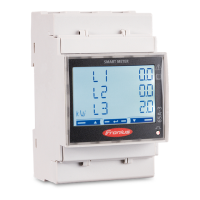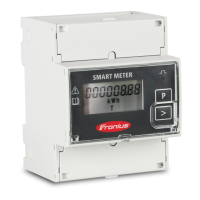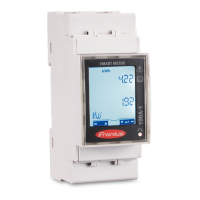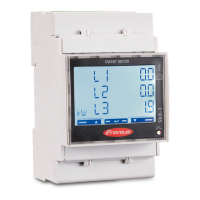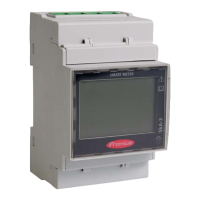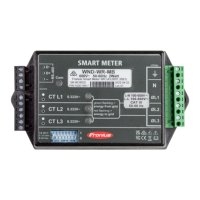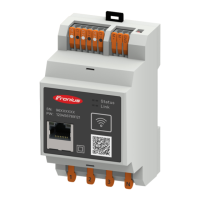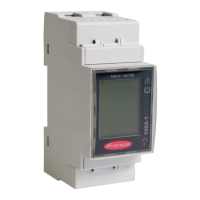Installation
Checklist for
installation
For installation information, see the following chapters:
1
Switch off the power supply before establishing a mains connection.
2
Mount the Fronius Smart Meter (see Mounting on page 8).
3
Connect automatic circuit breakers or automatic circuit breakers and disconnectors
(see Protective circuit on page 8).
4
Connect the mains cable to the Fronius Smart Meter (see Cabling on page 9).
5
Connect the output terminals of the Fronius Smart Meter to the Fronius inverter (see
Connecting the data communication cable to the inverter on page 9).
6
If necessary, set terminating resistors (see Terminating resistors on page 11).
7
Tug on each wire and plug to make sure that they are securely connected to the ter-
minal blocks.
8
Switch on the power supply to the Fronius Smart Meter.
9
Check the firmware version of the Fronius inverter. To ensure compatibility between
the inverter and the Fronius Smart Meter, the software must always be kept up to
date. The update can be started via the inverter web page or using Solar.web.
10
If several Fronius Smart Meters are installed in the system, set the address (see
"Setting the address" under Setting the address of the Fronius Smart Meter on
page 17).
11
Configure and commission the meter (see Start-up on page 19).
Mounting The Fronius Smart Meter can be mounted on a 35 mm DIN rail. The housing comprises
2 modules according to DIN 43880
Protective circuit The Fronius Smart Meter is a hard-wired device and requires a disconnecting device (cir-
cuit breaker, switch or disconnector) and overcurrent protection (automatic circuit
breaker).
The Fronius Smart Meter consumes just 10-30 mA, so that the nominal capacity of all
switches, disconnectors, fuses and/or automatic circuit breakers is determined by the
wire gauge, mains voltage and required breaking capacity.
- Switches, disconnectors and circuit breakers must be within sight and located as
close as possible to the Fronius Smart Meter; they must also be easy to use.
- Use automatic circuit breakers that are rated for max. 63 A.
- To monitor more than one mains voltage, use connected automatic circuit breakers.
- The automatic circuit breakers must protect the mains terminal, which is marked L1.
In rare cases where the neutral conductor has overcurrent protection, the overcur-
rent protection device must interrupt both neutral and non-earthed cables concur-
rently.
- The circuit protection/disconnecting device must satisfy the requirements of IEC
60947-1 and IEC 60947-3, as well as all national and local regulations for electrical
systems.
8

